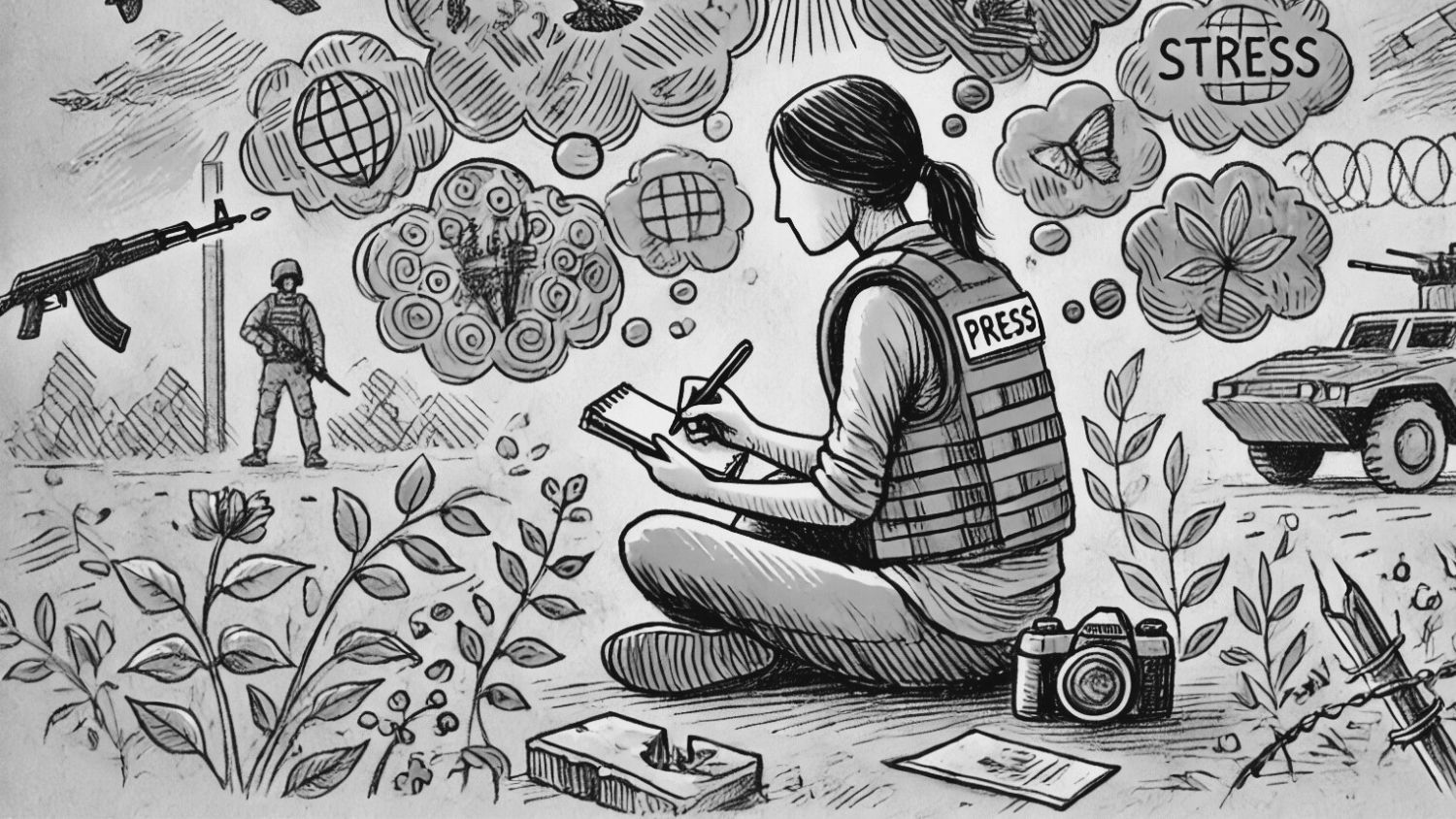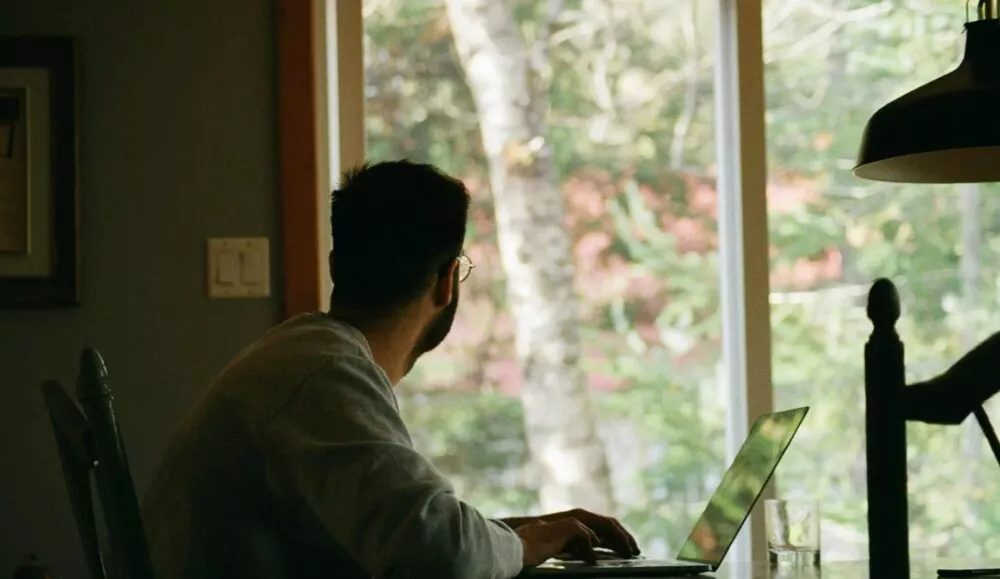“It’s not so much one single traumatic experience, but a series of events that gradually exhausted me mentally and emotionally,” confides Daphné Rousseau to MediaConnect. At only 22 years old, the AFP special correspondent was already covering war zones. But behind these reports lie invisible wounds. In 2022, she was diagnosed with post-traumatic stress disorder (PTSD), a consequence of multiple exposures to extreme violence since the start of her career. This pain was worsened by the tragic loss of her colleague Arman Soldin in Ukraine on May 9, 2023.
Whether independent, freelance, or correspondents, war journalists risk their lives in the name of information. According to Reporters Without Borders, 1,668 journalists were killed over 20 years (2003–2022), averaging 80 per year. The number of journalists killed on duty dropped in 2023 to 45 by December 1, the lowest since 2002, despite the situation in the Middle East, particularly Gaza, where since the start of the war between Israel and Hamas, at least 13 journalists have been killed professionally, and 56 in total including those killed unrelated to their profession.
A normal reaction to an abnormal event
Repeated exposure to traumatic events, such as witnessing death or physical or sexual harm, whether to oneself or others, can lead to PTSD. “It can also be triggered by seeing injured people, whether in reality or through images, or by listening to the account of a tragic event,” explains Olivia Hicks, AFP physician. PTSD manifests with three main symptoms. The first, re-experiencing, means reliving the traumatic event repeatedly, through nightmares or flashbacks, to the point of being overwhelmed by emotions. These intrusive memories may come with sensory changes such as a strange taste in the mouth or auditory hallucinations. The second symptom is avoidance. The person tries to escape anything that reminds them of the trauma and may even avoid mentioning it. “For example, someone with this symptom might avoid taking the subway if a traumatic event happened there, or be unable to go onto a balcony after a trauma linked to heights,” illustrates Olivia Hicks. The third and most common symptom is hypervigilance. “Jumping at every sound, looking over the shoulder, struggling to sleep... It’s a continuous protective reaction,” the doctor describes. The person acts as if in imminent danger even though the threat is far or past.
Often, these three symptoms come with deep sadness or guilt, adds Olivia Hicks. When the trauma is very strong, victims can suffer dissociation: “They see themselves leaving their body and watching the scene. They feel no pain or sensation. It’s a protective brain reaction.”
“It’s important to reassure people by clearly explaining what is happening to them.” These symptoms are “a normal reaction to an abnormal event,” says the AFP doctor. “Avoid alcohol, drugs, sleeping pills, and sedatives and instead prioritize a routine: eat well, sleep well, and be well surrounded,” she advises.
In most cases, symptoms fade with time or therapy. This is the case of Georges Malbrunot who, after 124 days of captivity in Iraq in 2004, told MediaConnect he “was not traumatized despite some stressful episodes.” He added: “Leaving Baghdad after my release, I wondered if I would be able to go back. I gave myself time to decide and found there was no insurmountable trauma or overwhelming nightmares.” The journalist has since continued his career, covering the Middle East for many years as a senior reporter at Le Figaro.
The fear of being a “bad journalist”
But sometimes symptoms persist. “The problem is that many journalists have difficulty accepting it,” notes Olivia Hicks. “Those we can treat return to the agency or take on different roles.” Since 2015, the AFP doctor has declared six journalists unfit to work in information reporting. Untreated PTSD can be fatal to physical health. “The typical pattern is a journalist experiencing traumatic reports who is not treated, turning to excessive alcohol consumption, being seen as unmanageable by those around them, and ending up with a heart attack,” explains Olivia Hicks. The heart is one of the first organs affected due to adrenaline overproduction, which damages arteries.
Awareness of journalists' mental health among editorial teams came late, according to those affected, who describe a culture demanding self-sacrifice at all costs. “I’ve seen too many colleagues unable to say stop, perpetuating a culture I consider outdated: pretending everything is fine and acting fully capable when it’s not,” says Daphné Rousseau, now working in AFP’s Paris culture desk on fashion and gastronomy topics. “Victims didn’t want to speak up for fear of not being sent on missions and being seen as weak or bad journalists,” the AFP doctor recalls. “Among war reporters, there are probably daredevils. But that doesn’t mean we all like danger!” adds Georges Malbrunot.
Previously, the focus was on security and technical training, reflecting an era when mental health was secondary. “In my time, we had no psychological preparation for risk exposure. And a GIGN-style test with physical and psychological simulation doesn’t prepare you for the rest of your life and career,” laments Daphné Rousseau. Journalist and former hostage Georges Malbrunot also never prepared for PTSD: “What prepared me was my reading and knowledge of Iraq,” he confides.
Supporting to better protect
Since 2017, AFP has involved psychologists specializing in psychotrauma to support journalists exposed to tragic events or images. “This illness remains poorly known in the profession and requires specific care,” stresses the AFP doctor.
Before deployment to hostile zones, AFP’s medical team prepares journalists to prevent PTSD through stress self-management tools and especially by raising awareness about this still little-known disorder. “We can’t give a psychic helmet of protection, but anticipation can be protective. Leaving without any idea of what could happen increases vulnerability to psychological breach,” explains Olivia Hicks.
Among protocols in place, war journalists returning from missions must undergo mandatory, immediate, and systematic debriefing with their supervisor. “The key is to be heard and have follow-up with mental health professionals who take over, since it is not the hierarchy’s role to monitor employees’ mental health. But it is their role to listen and detect if there are failings,” says Daphné Rousseau.
While psychological support mainly concerns war reporters, “this culture of support is gradually spreading to journalists covering sensitive topics, like the Mazan rape trial or the November 13 attacks,” the doctor explains. She adds: “Often, we only think of those going to hostile zones, but it can affect journalists covering crime, desk video/photo, violence against women or children, or violent protests. It’s much broader than war correspondents.” For this reason, AFP’s psychological consultations are open to all employees, including freelancers, offered in five languages and accessible online or in person for any reason.
“Today, the field has evolved somewhat from the old days when coming back from a report meant a pat on the back and a drink. But we still have progress to make,” notes Olivia Hicks. “Things have improved,” confirms Daphné Rousseau, “but we have come a long way.”








